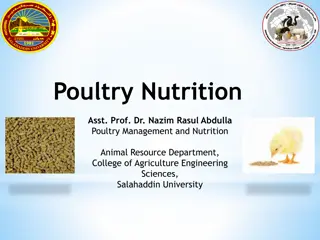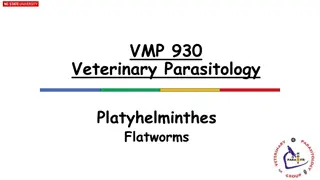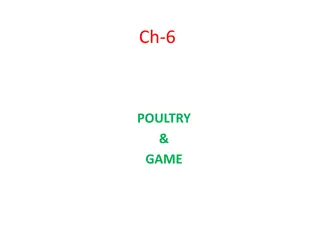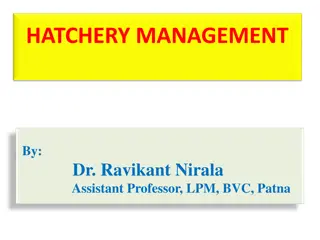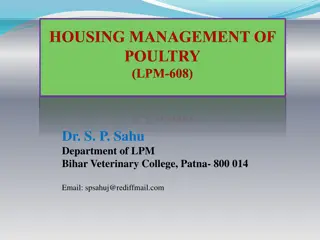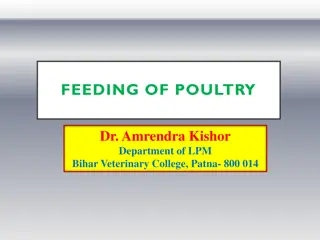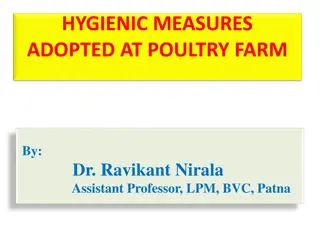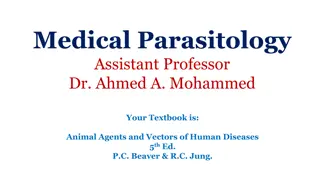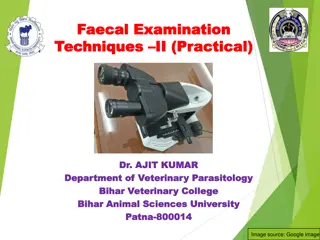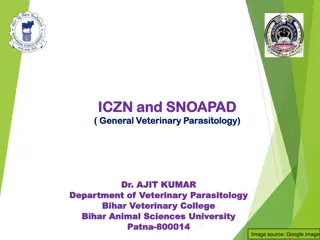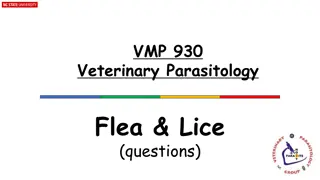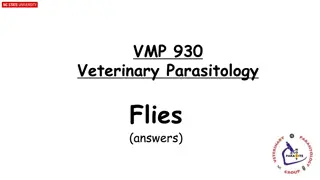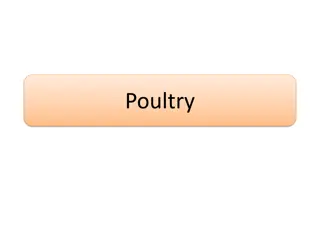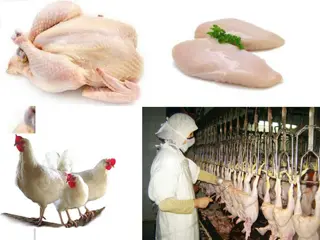Understanding Veterinary Parasitology: Mites, Poultry Mite Characteristics, and Minor Mites Quiz
Explore the world of veterinary parasitology with a focus on mites, including poultry mite characteristics and a quiz on minor mites. Learn about different mite species affecting birds and animals, their identification, traits, and management. Delve into distinguishing features, clinical signs, and control measures for various mite infestations. Test your knowledge with engaging quizzes and informative content on mite-related topics in veterinary medicine.
Download Presentation

Please find below an Image/Link to download the presentation.
The content on the website is provided AS IS for your information and personal use only. It may not be sold, licensed, or shared on other websites without obtaining consent from the author. Download presentation by click this link. If you encounter any issues during the download, it is possible that the publisher has removed the file from their server.
E N D
Presentation Transcript
VMP 930 Veterinary Parasitology Mites (answers)
Poultry Mite Quiz Poultry Mite Characteristics: Compare and Contrast the Poultry Mites Dermanyssus gallinae v/s Ornithonyssus sylviarum. B ____ 1. On Birds During the Day ____ 2. Surveillance Program ____ 3. Wild bird hosts ____ 4. Inspect Cracks & Crevices ____ 5. Temporary Zoonosis ____ 6. Northern Fowl Mite ____ 7. Decreased productivity A.Dermanyssus gallinae B. Ornithonyssus sylviarum C C A C. Both C B C
Poultry Mite Quiz Poultry Mite Characteristics: Compare and Contrast the Poultry Mites Dermanyssus gallinae v/s Ornithonyssus sylviarum. C B C A ____ 1. Anemia ____ 2.Congregate Around Bird s Vent ____ 3. Populations can increase rapidly ____ 4. Roost Mite ____ 5. Chickens are primary treatment target ____ 6. Biosecurity v/s fomite transmission A.Dermanyssus gallinae B. Ornithonyssus sylviarum C. Both B C
Minor Mites Quiz A few mites to remember: Match the common and scientific names C D ____ 1. Canker Ear Mite of Rabbits ____ 2. Mange on Bovine Tail-head E A C A. Notoedres sp. B. Otodectes sp. ____ 3. Scaly-Leg Mite of Poultry ____ 4. Mange Mite of Cats ____ 5. Scab Mite of Sheep ____ 6. Ear Mite of Pets C. Psoroptes sp. D. Chorioptes sp. E. Knimedocoptes sp. B
Questions: Otodectes v/s Notoedres A ____ 1. Ear mite of cats & dogs C ____ 2. Pruritic Alopecia + Excoriations Pyoderma B ____ 3. Starts on Ear Pinna, Head, Neck A. Otodectes cynotis B. Notoedres cati C. Both B ____ 4. Skin Scrape A ____ 5. Ear Swab & Otoscope A ____ 6. Aural hematoma B ____ 7. Rare, highly contagious mange mite of cats A ____ 8. External Ear Canal
Sarcoptes scabiei General Questions True or False 1. Although there are host specific variants (or subspecies) of Sarcoptes scabiei, interspecific host infections are uncommon and transient, unless there is an immunocompromised status. True 2. Eggs of Sarcoptes scabiei are easily eliminated by miticides; so repeat treatments are a waste of time & money. False 3. Sarcoptes scabiei is transmitted via direct contact with other hosts or environmental fomites True
Sarcoptes scabiei Scabies mite (General) Match Clinical signs with Acute or Chronic scabies B ___ 1. Hyperkeratosis, severe skin thickening with fold formation and crust buildup A. Acute, primary disease B. Chronic, generalized disease C. Both C ___ 2. Intense Pruritus A ___ 3. Papulocrustous eruptions with yellow crusts, excoriation, erythema, lichenification, and alopecia. Multiple Choice B ___ 1. For Sarcoptes scabiei, lesions typically start on the: A. Dorsal-Caudal region of the back B. Ear pinna, elbows, hocks, and ventrum. C. Front and Back Legs
Sarcoptes scabiei suis Scabies mite of Swine Fill in the Blank 1. List one Economic Pathology that may be caused by Sarcoptes scabiei suis. ____________________________ Poor growth/weight gain Poor feed conversion Destruction of pens & equipment 2. The original source of Sarcoptes scabieisuis infections The Nursing Sow to piglets is ________________ .
Sarcoptes scabiei canis Scabies mite of Dogs Fill in the Blank 1. What clinical sign is considered pathognomonic of a Sarcoptes scabiei infection in dogs? ______________________________________________ Involvement of the elbows and hocks Intense Pruritus 2. The sudden-onset of _______________is a common clinical sign of Sarcoptes scabiei infections. 3. What is the name of the scabies that occurs in well-groomed but itchy dogs ? _______________ Scabies incognito
Demodex canis Demodectic Mange of Dogs Fill in the Blank 1. Although Demodex canis normally occurs in small numbers and is normal fauna, what is the cause of demodectic mange? Overgrowth of the mite population because the host s immune system cannot limit the mite population. ___________________________________________________________________ Pododemodicosis 2. Often a complication of generalized demodicosis, _________________ is a digital, interdigital, plantar disease that always includes pyoderma.
Demodex canis Demodectic Mange of Dogs True or False Demodicosis is spread by direct contact with a mangy dog? False Demodicosis is contagious / zoonotic? False Multiple Choice C ____ 1. How do dogs first become infested with the mite Demodex canis? A. Direct Contact with a Mangy Dog B. Groomed with an Infested Dog Brush C. Mom to Nursing Puppies D. From the Bedding of a Mangy Dog
Demodectic mange: Disease Presentation What are characteristics of each form of disease presentation for Demodectic mange? A. Generalized Demodicosis B. Localized Demodicosis B A B ____ 1. Dz of puppies ____ 2. Prognosis guarded, intractable ____ 4. Mainly involves only the lips, face, forelegs ____ 5. Folliculitis, Furunculosis ____ 6. Most often resolves spontaneously ____ 7. Chronic DZ A A B
Types of Demodicosis Which characteristics are seen in each type of Demodectic mange? B ____ 1. Localized Demodicosis develops into Generalized Demodicosis C B A. Localized Demodicosis B. Juvenile-onset Demodicosis C. Adult-onset Demodicosis ____ 2. Heat-cycle Demodicosis ____ 3. No spontaneous cure as dog matures A B C ____ 4. Due to an Immature immune system ____ 5. Mite-Specific Immuno-incompetence ____ 6. Stress or Medical Event-mediated Demodicosis, often transient B ____ 7. Spay or Neuter dog with this presentation
Canine Mange Mites Demodex v/s Sarcoptes Genus & Common Names? Diagnostic technique? Demodex canis Follicle Mite Red Mange Skin Scrape, Trichogram Skin Scrape Sarcoptes scabiei Scabies Mite Scabies
Canine Mange Mites Demodex v/s Sarcoptes Identify? Sarcoptes Demodex
Canine Mange Mites Demodex v/s Sarcoptes Diagnosis ? Alopecia, Comedones Alopecia, Erythema, Lichenification Alopecia, Erythema, Pustules Demodex Sarcoptes Demodex
Canine Mange Mites Demodex v/s Sarcoptes Clinical Sign? This is a close pack of stray dogs. Pruritus Contagious Which mange mite? Sarcoptes
Canine Mange Mites Demodex v/s Sarcoptes This is a close pack of hunting dogs. Clinical Sign? +/- Pruritus Not Contagious Which mange mite? Demodex
Canine Mange Mites Demodex v/s Sarcoptes Clinical Sign? Which mange mite? Client Pruritus Sarcoptes Temporary Zoonosis
Canine Mange Mites Demodex v/s Sarcoptes Chronic presentation, which mange mite? Sarcoptes Demodex



